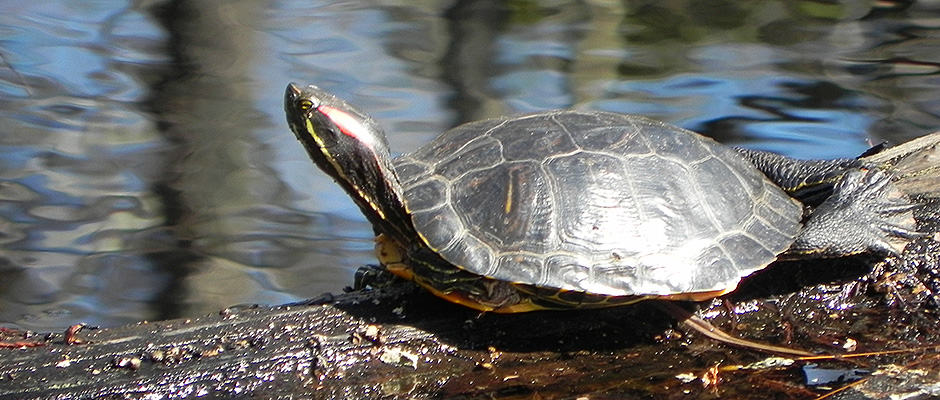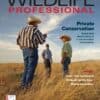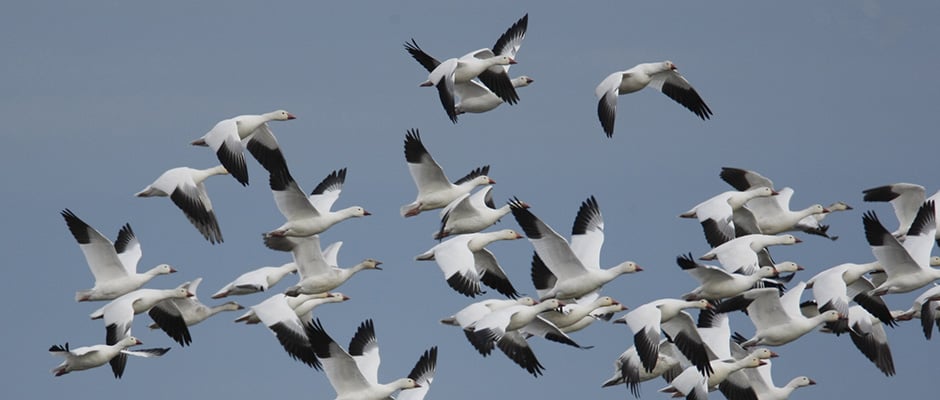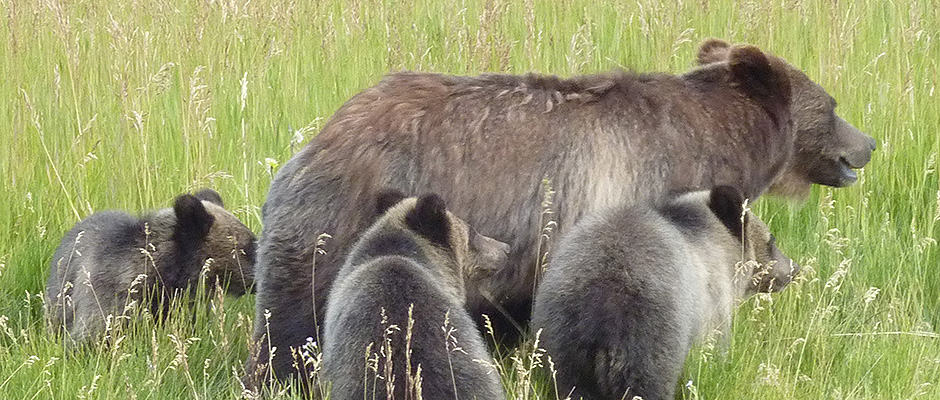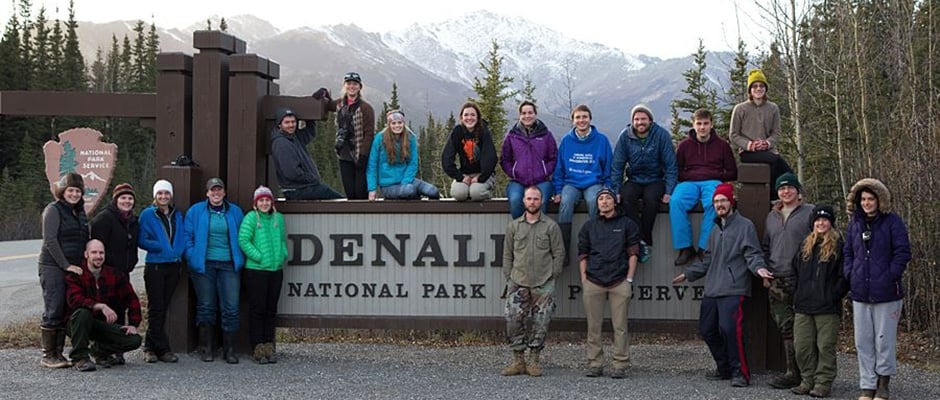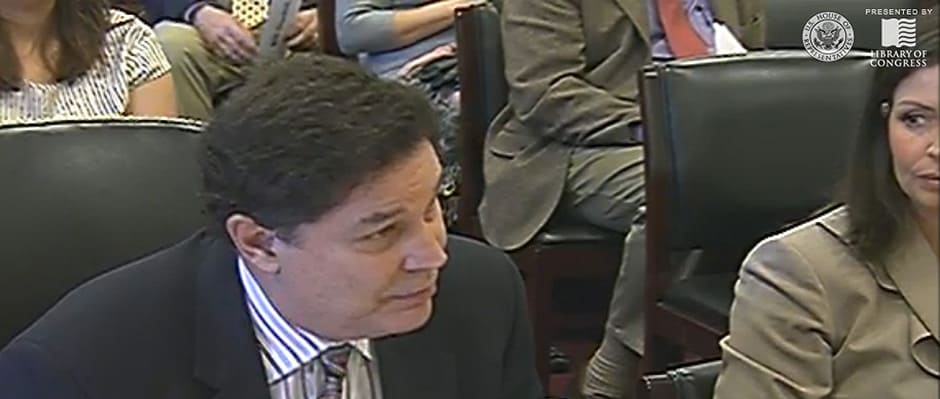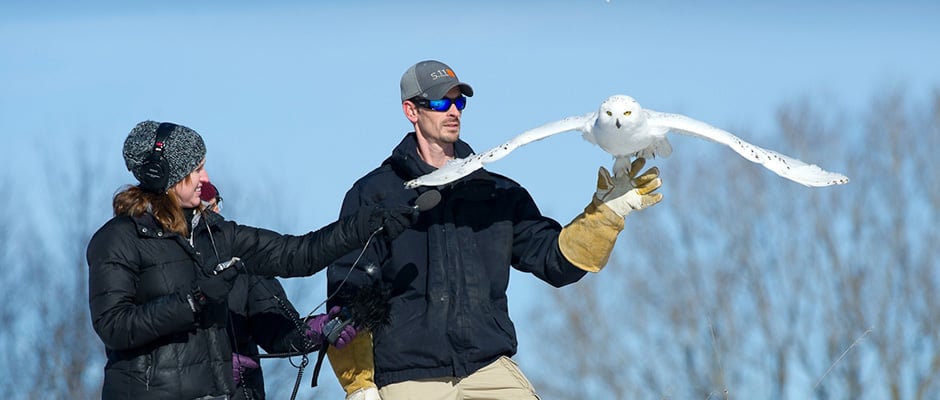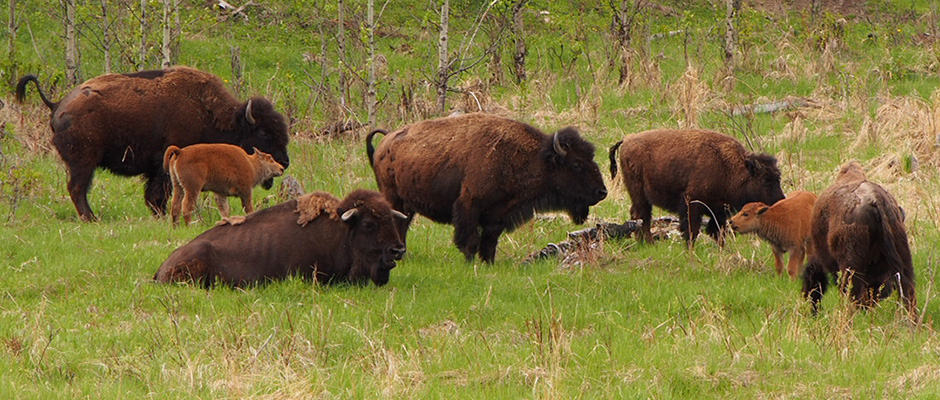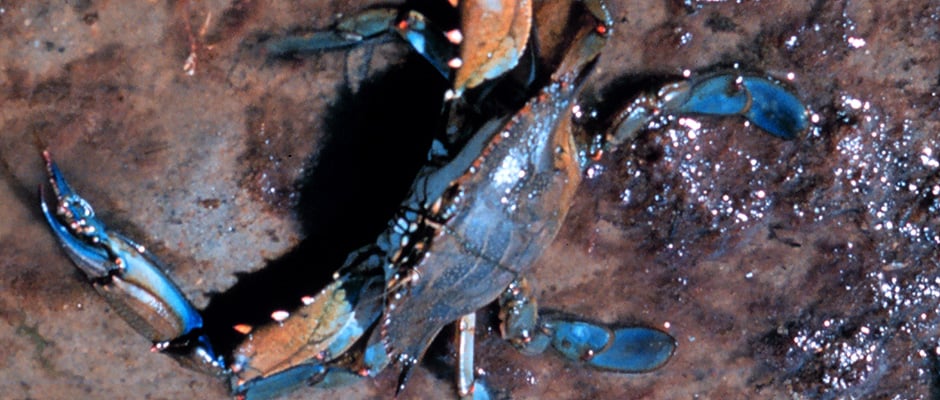
David Johnson was sitting at the dinner table one evening in 2012 when a colleague casually remarked that he saw a blue crab in Northeast Massachusetts, about 80 miles north of Cape Cod.
Johnson, an assistant professor at Virginia Institute of Marine Science, became skeptical because the blue crab species (Callinectes sapidus) isn’t historically found north of Cape Cod where the water is much colder, since blue crabs are a warm water species with a tropical origin.
Johnson decided to investigate. In his recently published study in the Journal of Crustacean Biology, Johnson found blue crabs are, in fact, expanding northward, and the reason is likely a common one – climate change.
After three more blue crab sightings were reported, Johnson went into the salt marsh at low tide in Northeast Massachusetts to verify for himself that blue crabs were present. He found four. “As soon as I saw the flash of blue swimming in the water, I knew instantly it was a blue crab,” he said.
Johnson became excited because he thought this occurrence might be an anomaly. As the first part of his study, he used a crowdsourcing technique, asking around the gulf of Maine up to Nova Scotia for people to report blue crabs if they came across them. He found that there were, in fact, blue crab sightings as far north as Nova Scotia.
Johnson hypothesized that blue crabs extending their range into colder water signifies climate change, and the ocean temperatures north of Cape Cod were rising. According to Johnson, ocean temperature data in 2012 confirm that the water in the gulf of Maine was 1.3 degrees warmer than the previous 10 years.
Other species ranges are extending northward as a result of climate change as well, according to Johnson. In another study, Johnson found the marsh fiddler crab (Uca pugnax) also is extending northward. The fiddler crab was found in Hampton, New Hampshire, in summer 2014, about 50 miles north of its usual northern limit. But, Johnson said the blue crab is particularly unique because it’s the first commercially imported species that’s moving into the gulf of Maine.
“While some public officials don’t believe in climate change, our animals certainly do,” Johnson said. “Our next challenge is to determine the impact of these movements or shifts in species range.”
According to Johnson, it’s a little unclear as to how the northward movement of blue crabs will impact other species. However, one result can be blue crabs interacting with the invasive species green crabs (Carcinus maenas). Green crabs are shellfish predators, making them unpopular to shellfish fishermen, Johnson said. But blue crabs are predators of the invasive green crab, so their movement northward can benefit the shellfish population. At the same time, blue crabs also eat clams, which is bad news for the clam population.
“We’re not certain if the blue crabs are a permanent population this far north,” Johnson said. “However, if it’s not permanent now, it will be soon given climate change and our predictions of water temperatures rising. It’s interesting to see how things will progress going forward.”
